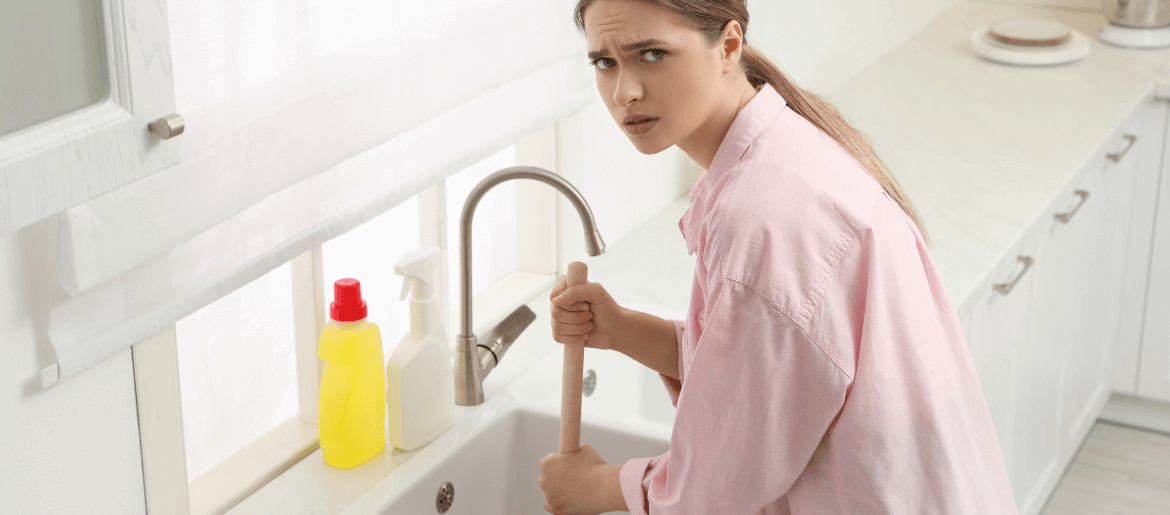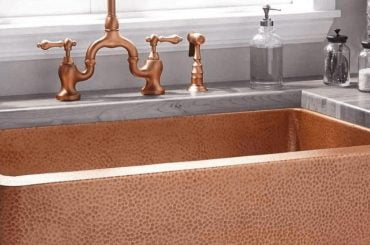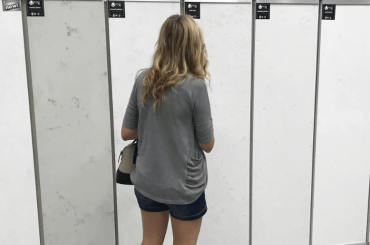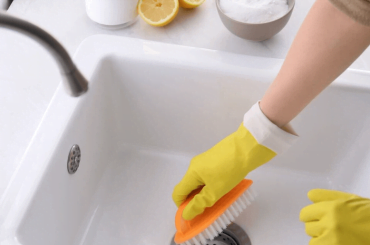One of the most frustrating household problems is when the sink becomes clogged. Water accumulates in the sink and will not drain. If this happens to you, don’t panic!
Luckily, there is a way to unclog the sink using Drano without having to call a plumber. Drano is a popular household item that is often used to unclog sinks. There are some important things to keep in mind when using Drano.
In this blog post, we will discuss how to unclog a sink using Drano. We’ll also give you some tips for keeping your drains clog-free in the future.
3 Methods To Unclog Sink Using Drano
There are several different methods you can use to unclog a sink using Drano.
- One of the easiest ways is to pour a small amount of Drano into the clogged drain and let it sit for at least 30 minutes. Then, run hot water through the sink to see if this loosens up any of the blockages. If not, you can try adding more Drano or using a plumbing snake to dislodge any clogs that may be further down the pipe.
- Another method is to create a homemade Drano concoction by mixing baking soda, vinegar and hot water in equal amounts. Pour this mixture into the clogged drain and let it sit for several minutes. Then, run hot water through the sink to see if this loosens up any of the blockages.
- If none of these methods work, you can try using a combination of Drano and boiling water. Simply pour the boiling water into the drain followed by several small scoops of Drano and then cover the drain with a cloth or towel to keep the steam inside. Let this mixture sit overnight and you should be able to loosen up any blockages and clear the clog in your sink.
Regardless of the method you choose, it is important to be very careful when using Drano around your sink. Always wear gloves, avoid getting the product on your skin or in your eyes and never mix it with other chemicals.
What you’ll need to do the job?
To unclog a sink using Drano, you will need the following supplies:
- A bucket or container to catch any excess liquid and debris that is released from the clog.
- A screwdriver to remove the drain cover.
- Protective gloves and eyewear to ensure that your hands and eyes are protected from any chemicals in the Drano solution.
- A second bucket filled with hot water will be used to rinse away the clogging residue once the clog has been broken free.
- A pair of sturdy tongs to remove any large pieces of debris that are released from the clog as you work, such as hair or food.
- Once you have all of the necessary supplies, you can begin unclogging your sink by first pouring one cup of Drano solution into the sink and waiting for several minutes to allow it to work on the clog.
- Next, use your tongs or another sturdy utensil to break apart any large pieces of debris that have accumulated in the sink, being careful not to put your hands directly into the clogged drain.
- Once you have done this, fill a bucket or other container with hot water and pour it down the drain to help flush away any remaining clogged residue.
Step Wise Process Of Unclogging A Sink With Drano
Here are 7 steps you may need to follow to unclogging a sink with Drano
- Remove any items or food scraps from around your drain so that they won’t hinder your efforts as you begin removing gunk from your sink. You can place these in a nearby trash can or bowl for later disposal.
- Place your Drano product directly in your drain and cover it with hot water from the tap.
- Let the mixture work on your sink clog for at least 15 minutes, so that you can loosen any gunk that has accumulated in your sink. If the drain is still clogged after 15 minutes, you may need to let the mixture work on your sink for up to 60 minutes.
- Check your drain periodically as the solution works its magic. If you notice a buildup of gunk around your drain, use an old toothbrush or small brush to get in there and remove it before moving on to the next step.
- After giving your Drano solution time to work, turn on your cold water tap and run it for several seconds. This will help flush out any remaining gunk in your sink so that you can continue cleaning it.
- If you still notice some debris or clogs around your drain, you may want to consider using a small plumber’s snake or drain auger to get in there and finish cleaning your sink.
- Rinse out your sink with some hot water and wipe it dry with a clean towel so that you can enjoy a clog-free sink once again!
As you can see, unclogging sinks with Drano is a pretty simple process.
How long to flush the drain with hot water for optimal results?
A lot of people recommend that you should flush your drain with hot water for at least 10 minutes to effectively remove all the grease and other debris from it. Overall, flushing your drain with hot water is a quick, easy and effective way to remove all the built-up grease and debris from it.
However, if you are dealing with a particularly large clog, then you may need to run some hotter water through the drain for a few hours or even overnight to get rid of all the grease and other debris that has built up in it.
To avoid the damaging effects of harsh chemicals, you should always opt for flushing your drain with hot water rather than using any potentially harmful cleaning solutions
Tips and tricks for keeping your drains clog-free in the future
Keeping your drains clog-free can be tricky but there are several tips and tricks that you can follow to help prevent clogs from forming in the future.
- Make sure that you regularly clean out the drains in your kitchen and bathroom using a drain cleaner or de-clogging solution.
- Another important step is to keep an eye out for any signs that your drains may be starting to clog up, such as slow-moving water and backups.
- One of the most important steps is being mindful of what kinds of things you put down your drains, as some common items like grease and oil can cause big problems.
- Additionally, be sure to use strainers so that hair, food particles and other debris don’t fall into the drain and cause clogs.
- Another tip is to run plenty of hot water down your drains after using them. This helps flush out any gunk that may have built up inside over time.
- You can also use baking soda and vinegar periodically, which are both effective at breaking up clogs and cleaning away debris.
- Finally, if you do experience clogs or blockages, it’s important to address them as quickly as possible. This can involve using a plunger or snaking the drain to remove any blockages or calling in a professional plumber if necessary.
FAQs – Unclog sink Using Drano
How much Drano should I put in my sink?
There is no definitive answer to this question, as the amount of Drano required will depend on factors such as the size and type of sink you have and how clogged it is.
Generally speaking, you should start with a small amount of Drano, such as 1/4 cup or less. If this does not seem to be effective, you can try using more in subsequent attempts. It is always important to read the instructions that come with your Drano carefully before use.
Does Drano work on deep clogs?
Yes, Drano works on deep clogs. It is designed to cut through all types of grease and hair in your pipes, so it will help you remove clogs that are farther down the drainpipe.
However, if you have a particularly stubborn clog or one that is located outside of your home in the city sewer system, you may want to consider contacting a professional plumber for assistance.
There are several different types of Drano products that can help you remove clogs from your pipes, including those designed for the kitchen sink, bathroom drains and outside drains.
Is it better to let Drano sit overnight?
There is no definitive answer to this question, as the best method for using Drano will depend on a variety of factors, such as the severity of the clog and your personal preferences.
Some people recommend letting Drano sit in the drain overnight, to give it time to work on the clog. However, others suggest that doing so can increase the risk of damage to your plumbing since Drano can be quite corrosive.
Ultimately, the best thing to do is experiment with a few different methods and see what works for you.
If you are dealing with a severe clog, it may be a good idea to let Drano sit overnight. This will give the chemical more time to break down the clog and clear your drain.
Final Words
If your sink is clogged, don’t call a plumber just yet. You might be able to unclog it yourself using Drano. Just pour it down the sink and wait for it to work its magic. Before you know it, your sink will be as good as new.
If your sink is still clogged or has a more serious issue, it may be time to call a professional.
We hope this article has helped you understand how to use Drano and how it can help you keep your drains clear.





